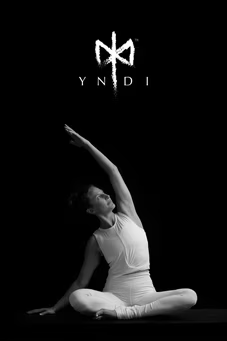Year-Round Gardening
Plant Potting Tips
Season 2 Episode 1 | 3m 6sVideo has Closed Captions
Learn quick tips for potting plants like a pro.
Planting in pots or containers can be a great option if you're low on garden space or want plants on your porch, patio or inside. But picking the right pot, soil type (or soil alternative) and plants is key. Tom Butzler from Penn State Extension shares easy tips, including a good way to reuse empty plastic bottles or soda cans.
Problems playing video? | Closed Captioning Feedback
Problems playing video? | Closed Captioning Feedback
Year-Round Gardening is a local public television program presented by WPSU
Year-Round Gardening
Plant Potting Tips
Season 2 Episode 1 | 3m 6sVideo has Closed Captions
Planting in pots or containers can be a great option if you're low on garden space or want plants on your porch, patio or inside. But picking the right pot, soil type (or soil alternative) and plants is key. Tom Butzler from Penn State Extension shares easy tips, including a good way to reuse empty plastic bottles or soda cans.
Problems playing video? | Closed Captioning Feedback
How to Watch Year-Round Gardening
Year-Round Gardening is available to stream on pbs.org and the free PBS App, available on iPhone, Apple TV, Android TV, Android smartphones, Amazon Fire TV, Amazon Fire Tablet, Roku, Samsung Smart TV, and Vizio.
Providing Support for PBS.org
Learn Moreabout PBS online sponsorshipUsing large plant pots and other containers are a great way to expand your garden, or grow plants during the winter.
I'll show more on this edition of Year-Round Gardening.
If you've run out of space in your garden, or just want to have plants on your porch, patio, or in your house, containers can be a great idea for you.
But you have to make sure you're using the materials that are right for you.
This includes container size, potting soil, and plant types.
What space are you using?
Is it simply on the windowsill or in a larger space?
Also consider what you want to grow.
If you want to grow vegetables such as herbs, a smaller pot will be fine.
However, if you want to grow large shrubs such as hydrangeas or azaleas, you should use a larger pot and, by extension, a larger space.
Make sure your pod has at least one hole in the bottom to allow for proper water drainage.
You may also want to consider a tray for some other material to place your pot on to allow for water to collect and evaporate without making a mess.
Avoid using soil for pots.
Over time, this will be compacted and limit oxygen and water movement, leading to poor plant growth.
In addition, soil is heavy and will make the container heavy to move.
Finally, there are many types of microorganisms that are detrimental to plant growth, and we would like to avoid those.
Because of those issues, we use a soilless medium that typically contains mixes of peat moss, perlite, and vermiculite.
These lightweight materials can make it easier to move your pot if need be.
It can also help with drainage, root growth, and be less expensive.
Large containers have a lot of space to fill, and it could get very expensive to fill the void with potting soil.
There are commercial inserts available that reduce the amount of container fill needed.
Or you could place lightweight material at the bottom to take up space, such as empty plastic bottles or soda cans.
Cover this area with a mesh screen to prevent potting soil from falling into the container bottom.
If using different types of plants, make sure that they all have similar growth conditions, such as light and water requirements.
ANNOUNCER: Videos like this are made possible by support from viewers like you.
If you enjoyed this video, visit wpsu.org to become a member today and help us create more content like this.


- Home and How To

Hit the road in a classic car for a tour through Great Britain with two antiques experts.












Support for PBS provided by:
Year-Round Gardening is a local public television program presented by WPSU
